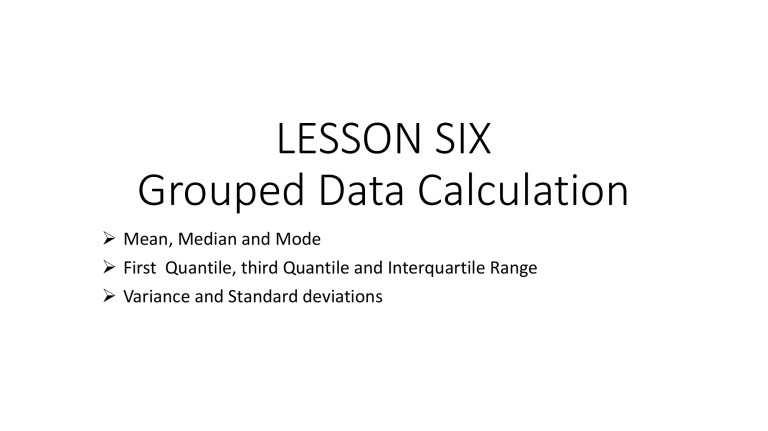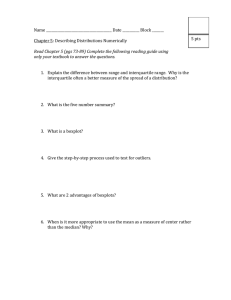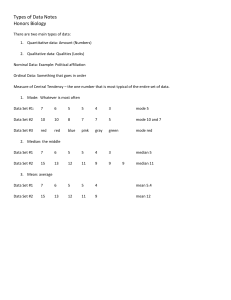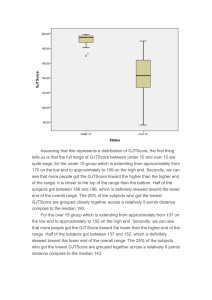
LESSON SIX Grouped Data Calculation Mean, Median and Mode First Quantile, third Quantile and Interquartile Range Variance and Standard deviations Mean Grouped Data xf For Sample: x= . n= n f and x is the midpoint of the class Example: The following table gives the frequency distribution of the number of orders received each day during the past 50 days at the office of a mail-order company. Calculate the mean. Number of orders 10 – 12 13 - 15 16 - 18 19 - 21 Total f 4 12 20 14 50 Median and Interquartile Range for Grouped Data Step 1: Construct the cumulative frequency distribution. Step 2: Decide the class that contain the median. Class Median is the first class with the value of cumulative frequency equal at least n/2. Step 3: Find the median by using the following formula: n2 F Median = L m i fm Where: n = the total frequency F = the cumulative frequency before class median f m = the frequency of the class median i = the class width Lm = the lower boundary of the class median Quartiles Using the same method of calculation as in the Median, we can get Q1 and Q3 equation as follows: Q1 LQ1 n 4 F f Q1 i and Q3 LQ3 3n 4 F f Q3 i Interquartile Range IQR = Q3 Q1 Mode for Grouped Data Mode is the value that has the highest frequency in a data set. For grouped data, class mode (or, modal class) is the class with the highest frequency. To find mode for grouped data, use the following formula: 1 Mode = L mo i 1 2 Where: Lmo is the lower boundary of class mode 2 is the difference between the frequency of class mode and the frequency of the class before the class mode 1 is the difference between the frequency of class mode and the frequency of the class after the class mode i is the class width Time to travel to work Frequency 1 - 10 8 11 - 20 14 21 - 30 12 31 - 40 9 41 - 50 7 Variance and Standard Deviation for Grouped Data x f Population Variance: 2 xf N 2 N x f Sample Variance: s 2 xf 2 n 1 where n f 2 n 1 2






